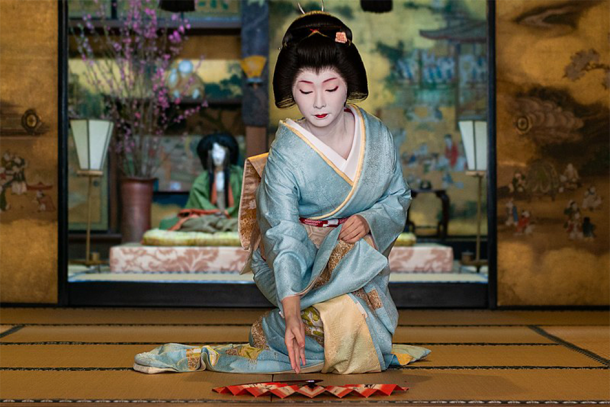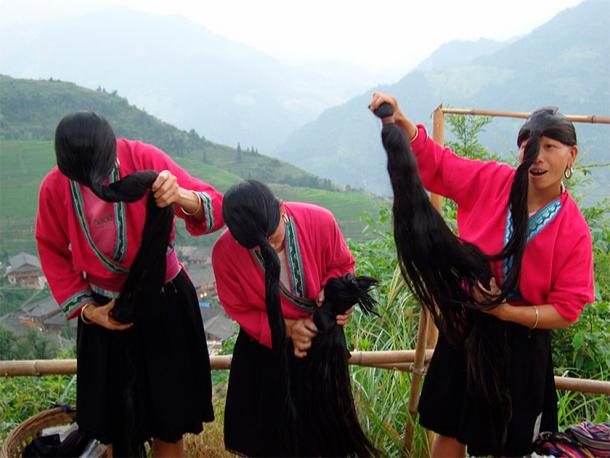
They have been successfully using it for ever.. Understand that the fundamental problem with selling cosmetic products is word of mouth. At the end of the day, you really have to have a superior product that is better than the known alternative.
Add in that plenty of therapies work only with a subset of the prospective audience and away you go. again the final seive is word of mouth and a tough marketing haul.
Obviously a product used forever successfully has it made. At best it can be improved with geling agents but then it still best made yourself because it will be hard to store. You can eat it.
How to Get Geisha-Like Skin with Ancient Japanese Rice Water Treatment
https://www.ancient-origins.net/history-ancient-traditions/rice-water-0018222
UPDATED 8 APRIL, 2023 - 22:48 SAHIR
Traditional beauty tips and tricks from the Eastern hemisphere, particularly South Asia and Southeast Asia, are all the rage in the Western world. As more knowledge and information is disseminated about non-chemical application of home remedies on the skin, one such hack from ancient Japan has been doing the rounds in the last few years – rice water! Rice water is the starchy water that is left over after soaking or boiling rice, and it contains a variety of vitamins, minerals, and antioxidants that are beneficial for the skin.
A staple of the Asian diet, it achieved a second boost of popularity after being vetted by none other than Kim Kardashian, who swears by its ability to boost hair tresses. In India, rice water is consumed for its high starch content, which helps hydrate the body in debilitating health disorders. Japanese and Korean women, for centuries, use it for its rich mineral content that aids healthy skin.
Rice Water’s Use in Ancient Asian Societies: From Yakumi Women to the Yao
The use of rice water as a beauty treatment dates back to ancient Japan, where it was used by geishas to keep their skin looking soft, smooth, and porcelain-like. Geishas were a professional class of female entertainers who would entertain men and keep them company in public nightlife spaces, like bars and restaurants.

A Geisha from Kyoto. (Sawai Susao/ CC BY-SA 2.0 )
It was women in the Heian period (794-1185 AD) in Japan who first used rice water and kept floor-length healthy hair with regular usage. Renowned for their long, lustrous hair, they were called Yakumi women. Hair was considered a symbol of beauty and femininity. They would collect the leftover water from washing rice and use it to wash their hair. They believed that rice water helped to keep their hair strong, shiny, and healthy. It was also used as a skin toner to improve the appearance of the complexion.
Rice water was collected from the rinsing of rice, and it was used as a natural hair treatment. They would often soak their hair in rice water for several hours, or even overnight, to allow the nutrients in the water to penetrate their hair shafts.
A modern-day equivalent of this story comes from China with the Yao women from the Huangluo village. They are famed for having hair that is at least 2 meters (6 ft) in length on average, and which greys almost near their 80s! For Yao women, the hair is taken very seriously, cut only once in their lifetime between 16 and 18, and to be covered and kept hidden until marriage.

Yao women washing their hair in rice water with other ingredients. The nutrients in this method help grow and keep hair long. (S.D.86/ CC BY-SA 3.0 )
They credit the length, color, and health of their hair to the fact that it is regularly bathed in rice water. White sticky rice is vigorously washed in water, and the nutrients are extracted to be boiled and left to ferment in a wooden vat with Pomelo peels, ginger, and fleece flower root. This lowers the pH, keeping it in line with our hair’s natural acidity. The boiled mixture is then drained, and solid particles are removed. The Yao women are believed to leave the rice water to ferment for another two months!
In the medieval and modern period, Japanese geishas were (are) known for their beautiful and flawless skin, which was achieved through a combination of careful skincare practices, including the use of rice water. Geishas would soak their faces in rice water for long periods of time, as they believed it helped to brighten their skin, reduce the appearance of pores, and improve overall skin health.
Rice water has also been used in traditional Chinese medicine to soothe skin irritations and improve overall skin health. In China, rice water has been used as a traditional remedy for various skin conditions, including acne, eczema, and rosacea. It was also believed to have anti-aging benefits, as it was said to help reduce the appearance of fine lines and wrinkles.
The Science of Rice Water
So how does it work? Rice water is rich in gamma-oryzanol, a powerful antioxidant boosting collagen production. It contains niacinamide, a form of vitamin B3 that helps reducing dark spots and an uneven skin tone. It soothes and hydrates skin that is irritated or inflamed, because it is rich with amino acids. The self-contained antioxidants help protect the skin from free radicals and other environmental stressors.
Rice water’s easy access makes it a very fun DIY project, with just half a cup of rice offering one week’s worth of rice water! Excess water from the top of boiled rice, or draining the excess water after boiling the rice, can be added to a spray bottle and put in the refrigerator. This is then sprayed onto the face each day. A non-pyrotechnic way of doing this is soaking rice in water for over 40 minutes, and then decanting it.
Fermentation of rice water is another possibility, with the added bonus of higher efficacy which reinstates high pH and antioxidant levels. This rice can be stored for a day or more in a glass jar at room temperature and then refrigerated.
No comments:
Post a Comment